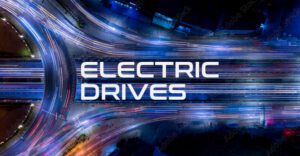“I’d rather buy a fridge than a car”, said a woman in an electric-car focus group I was observing last month. How neatly that curt dismissal sums up everything that’s wrong with the relationship between female drivers and electric cars. A fridge is a simple, easy, stress-free purchase; you are presented with a choice of products, each with a price tag and a familiar energy efficiency label.
You are not loaded with confusing terminology around the kWh energy consumption of the fridge, or its space in litres which no one understands. You are neither harassed by a salesman, nor asked to negotiate. You are not given at least three different ways to fund the purchase of your fridge. You can compare models online, and in the shop in peace and comfort, and then buy. Voila.
When it comes to buying an electric car, however, women can’t get off the starting blocks. They are simply not engaging with electric cars in the same breadth or depth that men are, despite the data showing that they are more predisposed to sustainable products than men, traditionally.
According to Auto Trader data, half of women don’t know about the 2030 ban on new petrol and diesel cars (as it currently stands…), and more than half of women actually think electric cars are more expensive to run than petrol ones, whereas the truth is that the only way they make any fiscal sense is via their lower daily running costs.
No one is explaining electric cars to women in the spaces they live their lives and therefore browse and ponder (wellbeing, health, families, travel, home etc), and car brands are still making the mistake of marketing EVs based on things like “tech”, which only 12 per cent of women care about in a car. Over-the-air software updates? What the hell are those? Apps for your car? Sounds like a massive extra headache. So is it any surprise that they aren’t engaging?
What underpins much of this behaviour, according to the qualitative findings from the aforementioned focus group, is the inherent trend in women and those who identify as such, to be more risk heightened.
Female consumers aren’t necessarily more risk-adverse, or we’d see a huge drop-off in women who wanted fast sports cars and high-performance cars, but they are more aware, earlier on in the car-buying journey, of certain risks when choosing their next car, and those risks will become sudden blockers to purchase.
I give you our electric-car buyers in our focus group again. One of the first things many of them thought about when considering an electric car, was the possibility of the car running out of electricity while on the motorway, with the kids in the back.

The very idea sent visible shudders through their spines and the next words, predictably, were “No thanks”. We don’t have the same insights from a male focus group around electric cars, but the risk of running out of juice specifically with children in the back has never featured high up the qualitative findings of any electric vehicle (EV) consumer studies I’ve seen that had male respondents.
Take that predisposition towards risk, and, moving on to public charging, you can sense the direction of travel. Charge in a secluded spot round the back of a motel, with little lighting and no one around, after dark? No thanks. It hardly matters that, actually, the percentage of female motorists required to use public chargers late at night may become very small, given the increasing range of batteries and the fact that most people travel fewer than 20 miles a day in the UK.
The reality of public charging is being drowned out right now by the perception of public charging. And the strong perception is that we don’t have enough public charging points, those we do have are often faulty or in remote areas, and we’ll all be on the verge of running out of charge at any moment in any given week.
The reality – if we can begin to get this across to female consumers in a way that makes sense for them and on a platform they read or watch – is that most electric cars are good for 180-200 miles (I’m not talking about WLTP quoted figures – I’m talking consumer experience), many are good for 300, charging at home is easy and very, very cheap if you have off-road parking and can get on an off-peak night-time energy tariff, and, crucially, in four years of driving an electric car, I’ve had to use a public charging point a grand total of eight times, because I can charge at home.
When I’ve used a public charger, it has always been in daylight and always in a busy area (due to their scarcity, they’re always busy). Now, what was so hard about that story-telling? Come on original equipment manufacturers (OEMs) and agencies, pull your creative fingers out.



